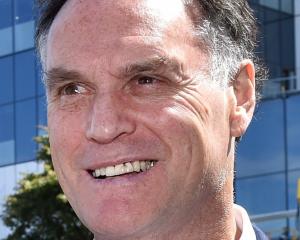The Southern District Health Board needs to rehabilitate the reputation of its maternity service to attract more new recruits, the board has been told.
Its recently appointed new midwifery director, Karen Ferraccioli, briefed the board last week on issues confronting the service, which included a well-known shortage of midwifery staff.
Latest figures showed the Queen Mary Maternity Centre, budgeted to have 32.88 full-time equivalent (FTE) midwives, instead had 12.62 FTE, while Southland Hospital, with a budgeted workforce of 16.78 FTE, only had 3.8 FTE.
While the staff shortages were worrying, there had been a welcome boost in the local lead maternity carer (LMC) workforce after four recent graduates opted to work as LMCs in Dunedin, Ms Ferraccioli said.
However, news that of the 28 recent graduates from Otago midwifery courses only six had opted to work in the South — the four LMCs and two newly hired hospital midwives — alarmed SDHB chairman Pete Hodgson.
"If we can only attract six out of 28, boy do we have an almighty reputational problem," he said.
Ms Ferraccioli agreed and said she had instituted several initiatives to try to turn that around, which included offering student midwives shifts as healthcare assistants so they could see what the SDHB had to offer.
One positive in the briefing was Ms Ferraccioli saying that numbers of LMC midwives — who work independently of the DHB — in the region had improved and were almost sufficient to cater for the number of expectant mothers in Otago and Southland.
For the past two years, the SDHB has had to provide LMC cover from Queen Mary midwives to cover the shortage of midwives, particularly in Dunedin.
If another two LMCs opted to work in Dunedin, each taking on an average annual caseload, the Queen Mary cover, which was initially envisaged as only being a short-term measure to cover the holiday period, might be able to be ended, Ms Ferraccioli said.
However, she warned the recovery was only fragile and she wanted to see still more midwives come to work in the region so that a pool of workers was available to provide cover for illness and annual leave.
More midwives would also ensure continuity of care for expectant mothers, she said.
"The value of our midwifery model has to be that we care for our women where they want and that we keep them safe where they are."











